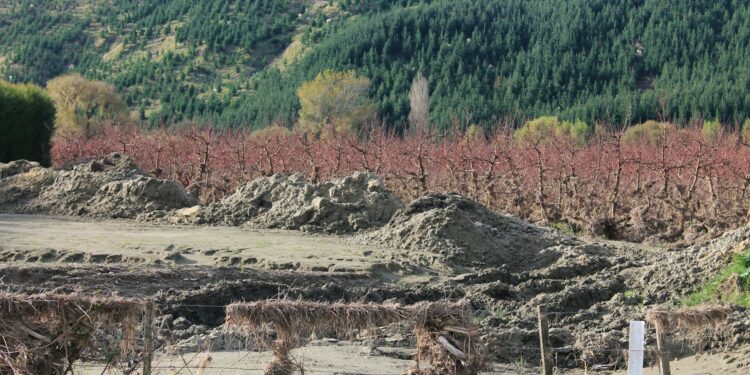“`html
Unraveling the Aftermath: How Cyclone Gabrielle Is Transforming New Zealand’s Ecosystems
The Impact of Cyclone Gabrielle on New Zealand’s Biodiversity
Cyclone Gabrielle, which swept through New Zealand in 2023, has left a significant mark on the country’s ecosystems. Experts have observed both immediate and long-term effects on biodiversity. Here’s what they found:
- Habitat Loss: Dense forests and wetlands experienced rapid destruction.
- Species Displacement: Many native species were forced out of their natural habitats.
- Altered Food Chains: The disruption of habitats has affected predator-prey relationships.
Transformation of Vegetation
Short-term Effects
The first few weeks after the cyclone revealed significant changes in vegetation:
- Tree Damage: Many mature trees were uprooted or snapped, which has changed forest composition.
- Invasive Species Surge: Weeds and invasive plants are taking advantage of the disturbance.
Long-term Predictions
Experts predict several potential long-term outcomes for New Zealand’s forests:
- Increased diversity in some areas, as new species establish in the disturbed plots.
- A shift towards a more resilient ecosystem if restoration efforts are successful.
Impact on Wildlife
Cyclone Gabrielle’s impact on wildlife has been profound. Here are some
Exploring the Ecological Impacts of Cyclone Gabrielle: Key Insights and Future Directions
Upcoming Symposium to Address Tropical Cyclone Research in Rotorua
A significant symposium is on the horizon in Rotorua, aimed at consolidating recent findings related to tropical cyclone ecology. The event will place emphasis on examining the ecological repercussions stemming from last year’s Cyclone Gabrielle. This gathering forms a part of the 2024 New Zealand Ecological Society Conference, where specialists will delve into an array of subjects such as Mātauranga Māori alongside ecological concerns, impacts of biological invasions on natural environments, Aotearoa’s native bats (pekapeka), and additional pertinent topics.
Insights from Experts
In anticipation of this symposium, speakers have been invited by the Science Media Centre to share previews of their forthcoming presentations.
Perspectives from Community Ecologist Warwick Allen
Warwick Allen, a Community Ecologist at Manaaki Whenua – Landcare Research, shares his observations:
“The immediate effects tropical cyclones impose on ecosystems are often starkly visible—like downed trees, hillside erosion, and sediment accumulation across landscapes. However, there exist more subtle and indirect impacts these storms can exert upon species as well as conservation efforts themselves.”
He continues by defining ecosanctuaries: “These expansive conservation projects exceed 25 hectares in size and involve comprehensive pest mammal control measures aimed at restoring ecosystems. With strong community engagement integral to their mission, these sanctuaries form essential pillars within New Zealand’s conservation framework. They provide safe havens for endangered native species while also fostering community connections with nature.”
“As part of our research,” he adds,” we engaged representatives from 65 ecosanctuaries across North Island to gauge the extent of damage experienced during Cyclone Gabrielle.”
The results revealed widespread damage caused by wind (impacting 91% of eco-sanctuaries) and erosion (affecting 85%), with flooding being slightly less common (47%) while sediment deposition was noted in around one-third (32%) of cases. Structural damages—including pest fences—and interference with vital conservation tasks such as monitoring native wildlife or conducting restoration planting initiatives were frequently reported aftermaths.
Of particular concern was that nearly half (40%) of pest-proof fencing suffered damage during this cyclone event; consequentially prompting quick incursions by pests in many instances encountered post-cyclone.
Additionally highlighted were potential long-lasting challenges following this disruption—ongoing management problems concerning pest species incursions; restricted access points for management oversight; diminished capabilities among conservation staff; not to mention lost opportunities associated with recovery efforts diverging attention away from progressive initiatives.
No conflicts declared.
Contributions from Dr Peter Bellingham
Dr Peter Bellingham, a Senior Researcher at Manaaki Whenua – Landcare Research adds insight into how tropical cyclones play a role in shaping diverse ecosystems:
“Regions frequently subjected to tropical cyclones have populations whose natural systems—from coral reefs all the way through lush rainforests—have adapted robustly over time.” He points out that “New Zealand operates outside commonly affected zones leading us often towards viewing each cyclone incidentally as disastrous events upon encountering them”.
Yet he stresses that infrequent disturbances—despite being perceived negatively—can actually foster regeneration within certain ecosystems like indigenous forests through natural cycles facilitated via such climatic upheavals if properly managed over time frames without considerable influence elsewhere around its context existences.”
“Nevertheless,” warns Bellingham,” complacency about future cyclone ramifications cannot be afforded any longer given evolving climate conditions—as warming oceanic temperatures are propelling increasingly intense storm activity into higher latitudes including our own shoreline.”
The complexities surrounding forest resilience towards cyclonic disruption remain uncertain due largely interacting land use factors limiting adaptability showcased rather than outright devastation alone regarding predominantly native tree mixed structures thriving symbiotically against competitive invasive flora due resource allocations disrupted thus presenting new patterns identifiers unpredictable based responding interactions extending thereafter stemming traditional damages rule scenarios reliant historical cyclone-dominant happenings creating so called embankments designed mitigate unnatural disturbances hence conserving original habitats prevailed previously benign.”
No conflicts declared.






